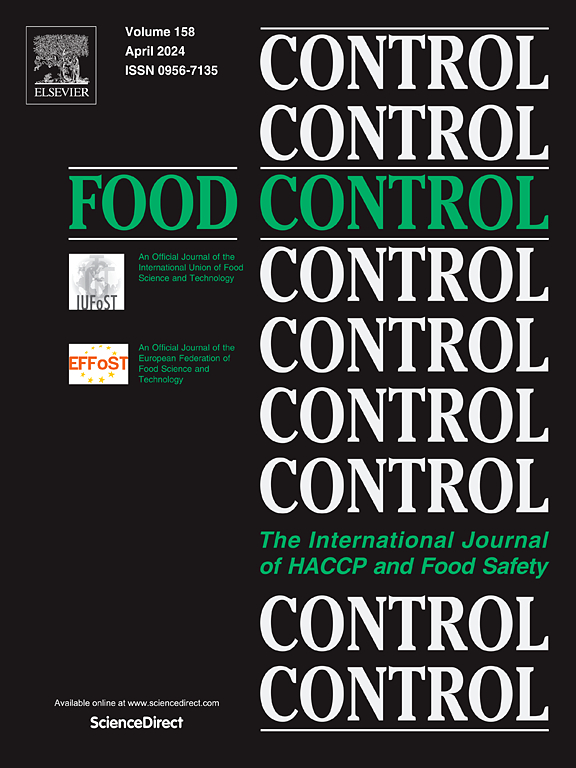Target-mediated rolling circle amplification/transcription coupling with double signal amplification of exonuclease III-assisth most of them are low-ed CRISPR/Cas12a-Cas13a for simultaneously ultrasensitive detection of aflatoxin B1 and ochratoxin A
IF 5.6
1区 农林科学
Q1 FOOD SCIENCE & TECHNOLOGY
引用次数: 0
Abstract
Aflatoxin B1 (AFB1) and ochratoxin A (OTA) are among the more toxic natural carcinogens that threaten human and animal health. Herein, we reported a target-mediated rolling circle amplification/transcription fluorescent aptasensor for the simultaneous ultrasensitive detection of AFB1 and OTA by hydrothermal synthesis of double emitting CQDs (CQDs) based on dual signal amplification of Exonuclease III (Exo Ⅲ) and CRISPR-Cas12a/Cas13a. CQDs was combined with probes for the signal marker. In the presence of AFB1, the aptamer (Apt1) specifically bonded to the target resulting in cDNA1 detachment, Apt1 was digested by the addition of Exo Ⅲ and AFB1 was released to interact with Apt1-cDNA1 again, releasing more cDNA1 to activate the trans-cleavage activity of the Cas12a protein and to digest the fluorescent probe (Probe1) from cobalt hydroxide nanosheet (CoOOH) surface detachment, leading to fluorescence recovery to achieve AFB1 detection. The system of crRNA2/cDNA2/Probe2/Cas13a was used for OTA detection with the similar principles and processes. This strategy utilized both enzymatic activities of Exo III without interfering with each other. In addition, the simultaneous cutting of DNA probe and RNA probe was realized by utilizing the difference in the cutting targets of Cas12a and Cas13a proteins. The double sensitization signal amplification could further reduce the detection limit to achieve the ultrasensitive detection. The linear range for AFB1 determination was 0.01–50 ng mL−1 with a detection limit of 3.1 pg mL−1. The OTA was 0.01–50 ng mL−1 with a detection limit of 3.5 pg mL−1. Finally, this developed method was employed to detect three kinds of real grain flour samples to demonstrate the reliability.
求助全文
约1分钟内获得全文
求助全文
来源期刊

Food Control
工程技术-食品科技
CiteScore
12.20
自引率
6.70%
发文量
758
审稿时长
33 days
期刊介绍:
Food Control is an international journal that provides essential information for those involved in food safety and process control.
Food Control covers the below areas that relate to food process control or to food safety of human foods:
• Microbial food safety and antimicrobial systems
• Mycotoxins
• Hazard analysis, HACCP and food safety objectives
• Risk assessment, including microbial and chemical hazards
• Quality assurance
• Good manufacturing practices
• Food process systems design and control
• Food Packaging technology and materials in contact with foods
• Rapid methods of analysis and detection, including sensor technology
• Codes of practice, legislation and international harmonization
• Consumer issues
• Education, training and research needs.
The scope of Food Control is comprehensive and includes original research papers, authoritative reviews, short communications, comment articles that report on new developments in food control, and position papers.
 求助内容:
求助内容: 应助结果提醒方式:
应助结果提醒方式:


